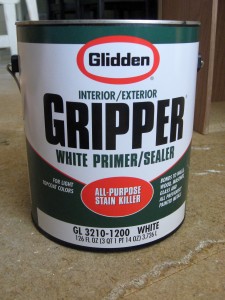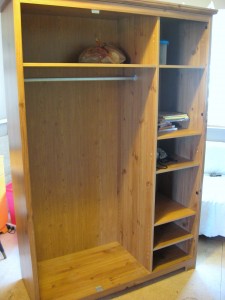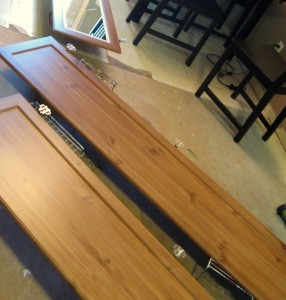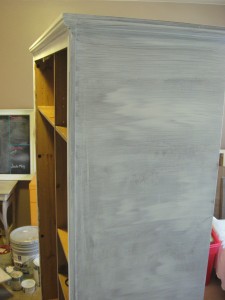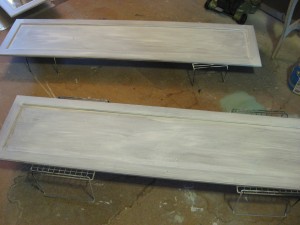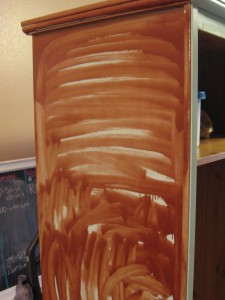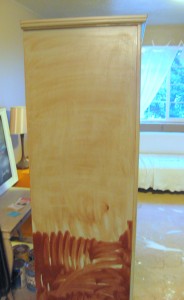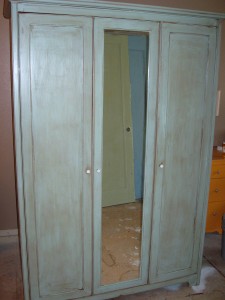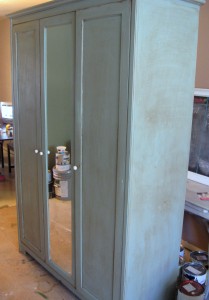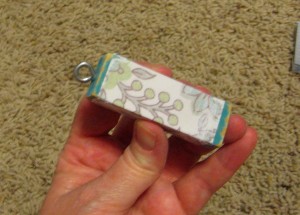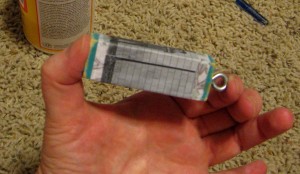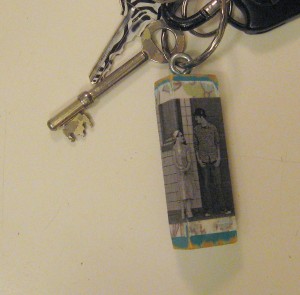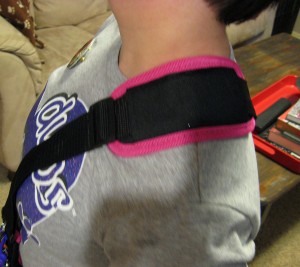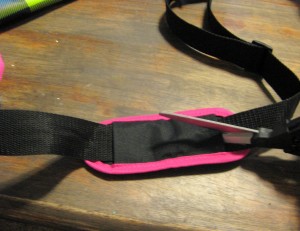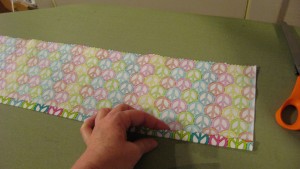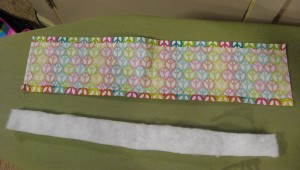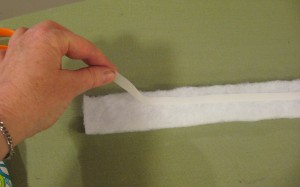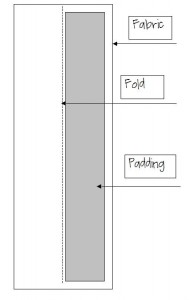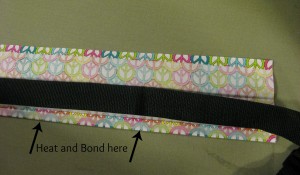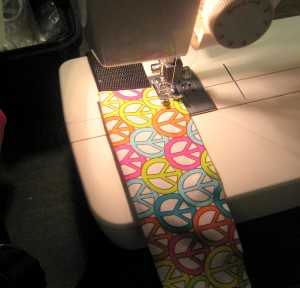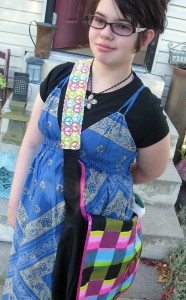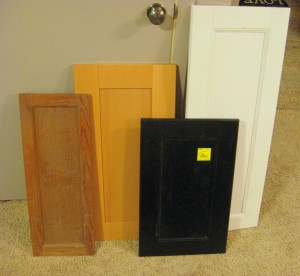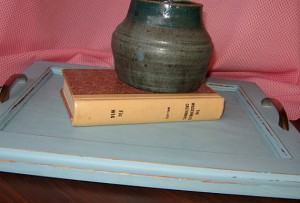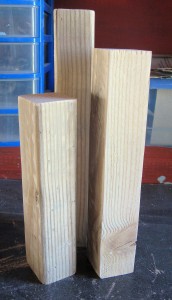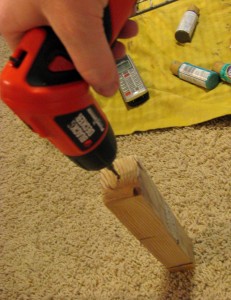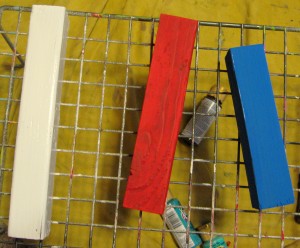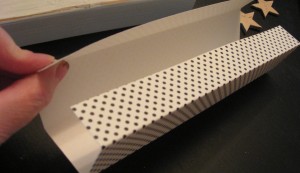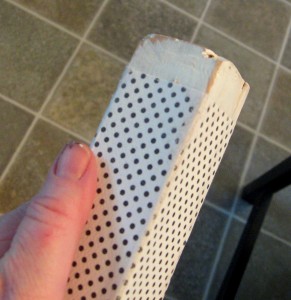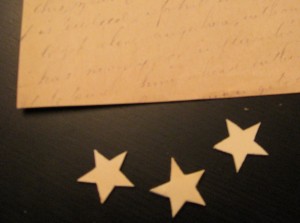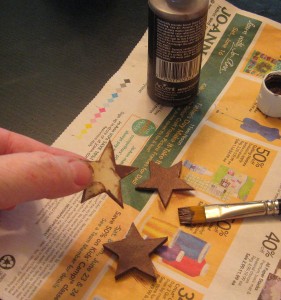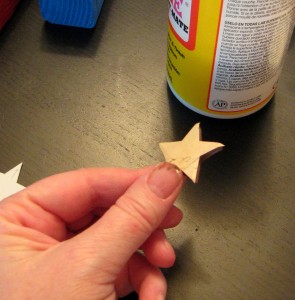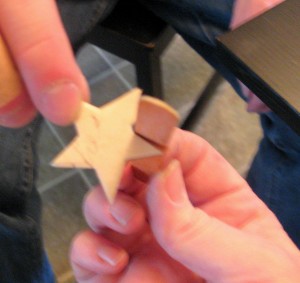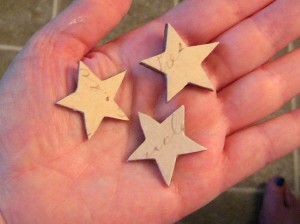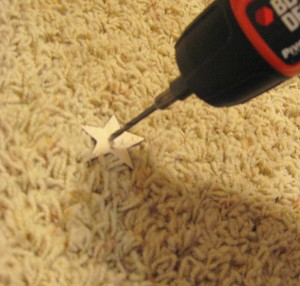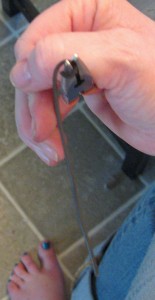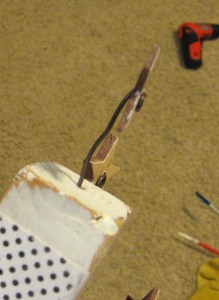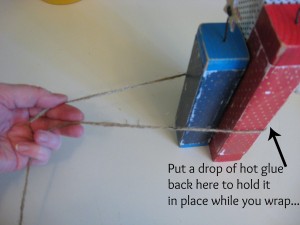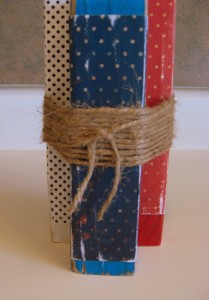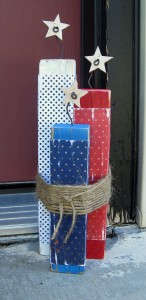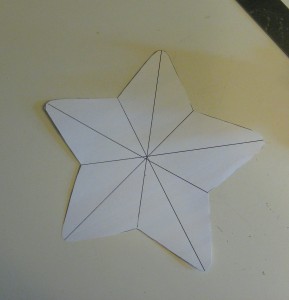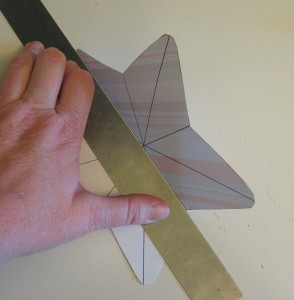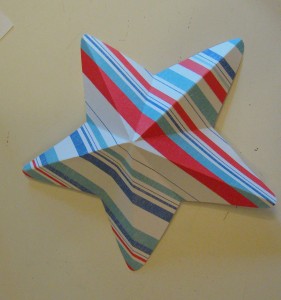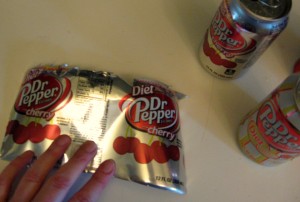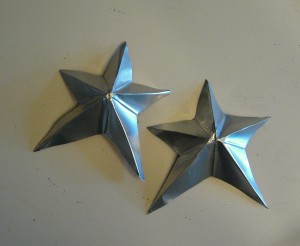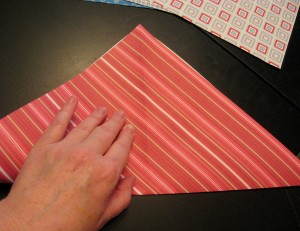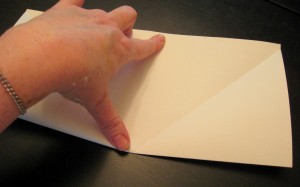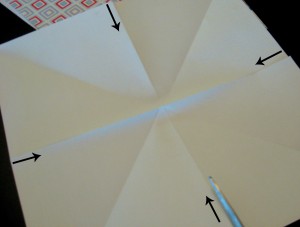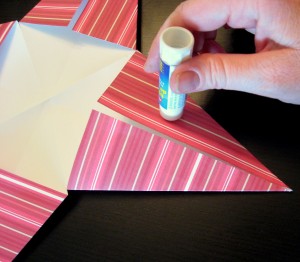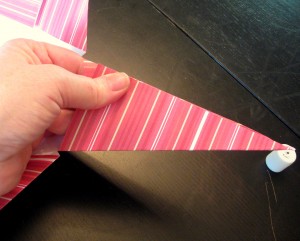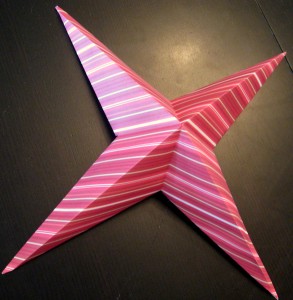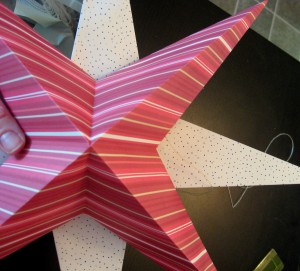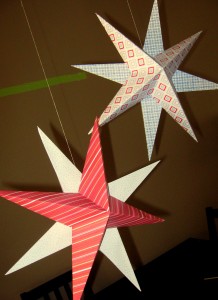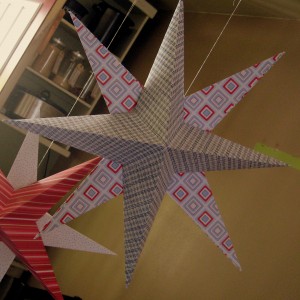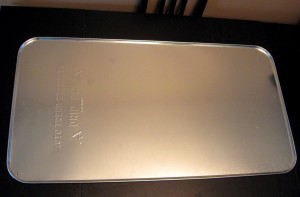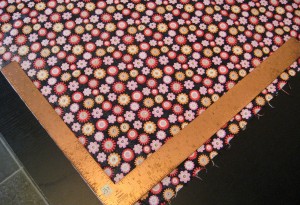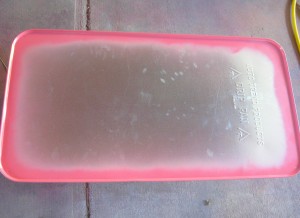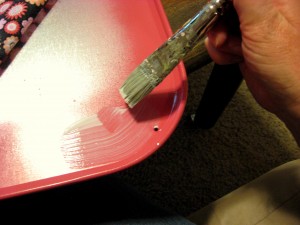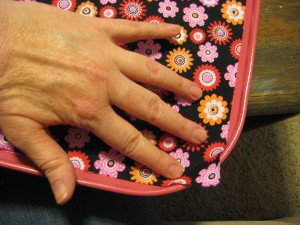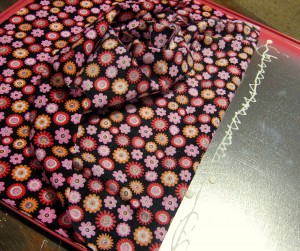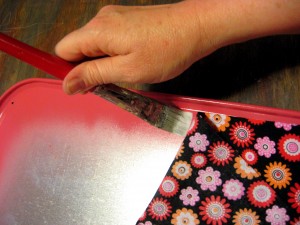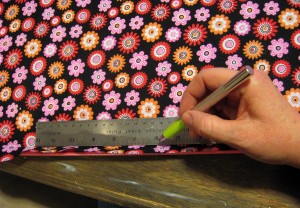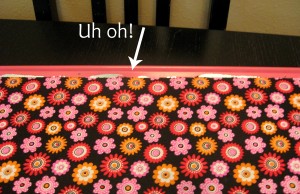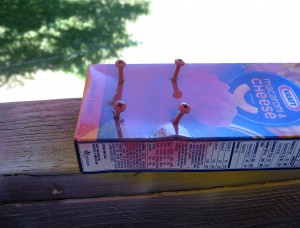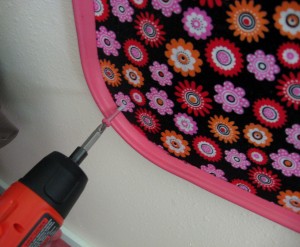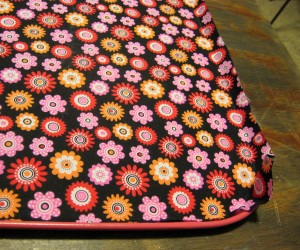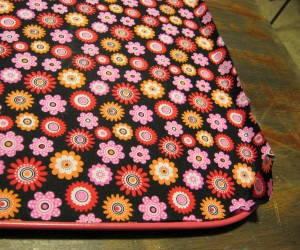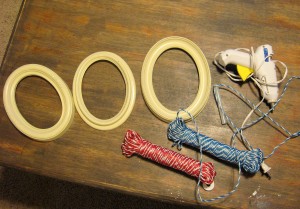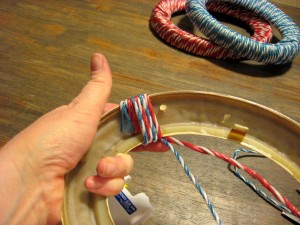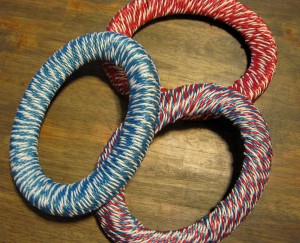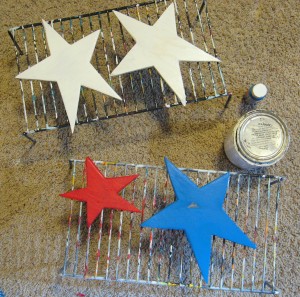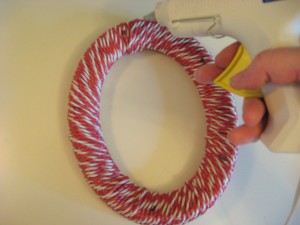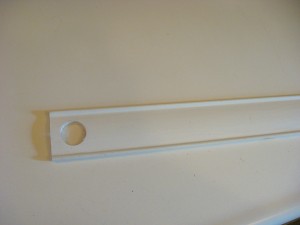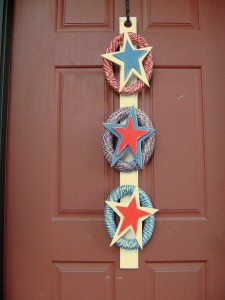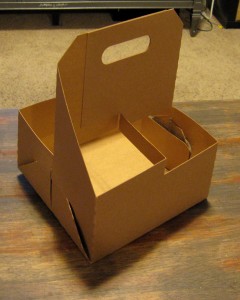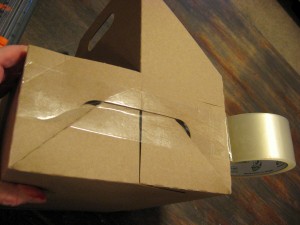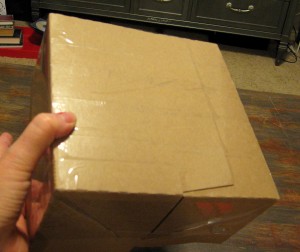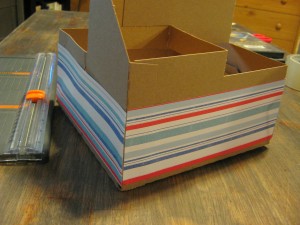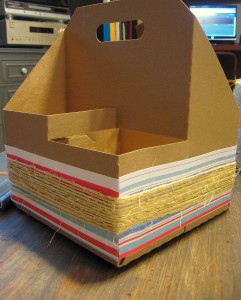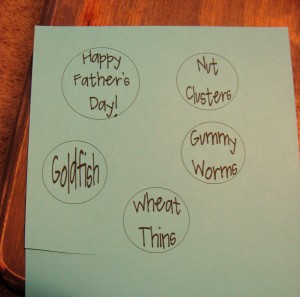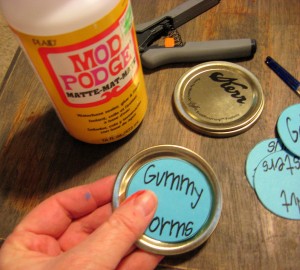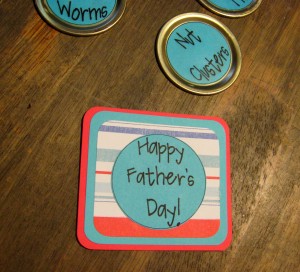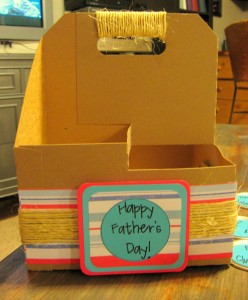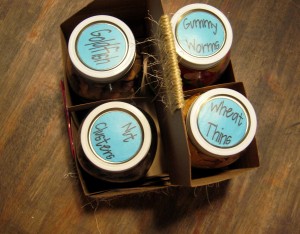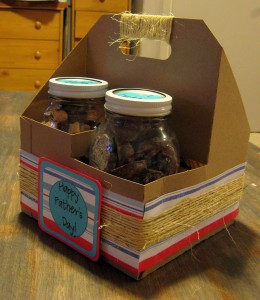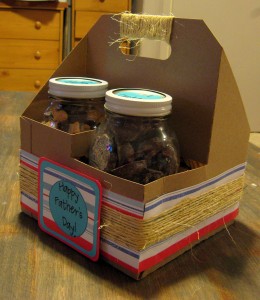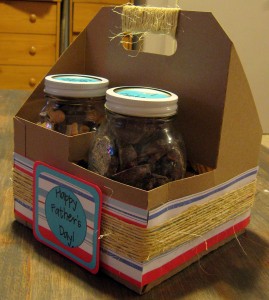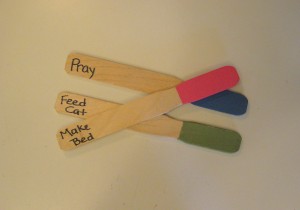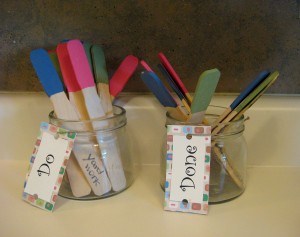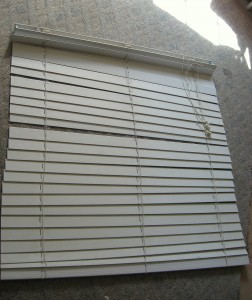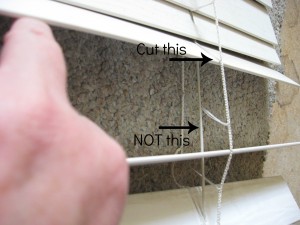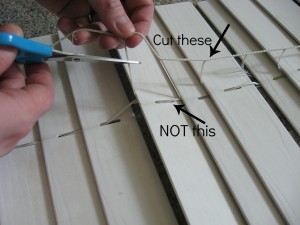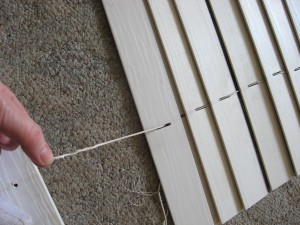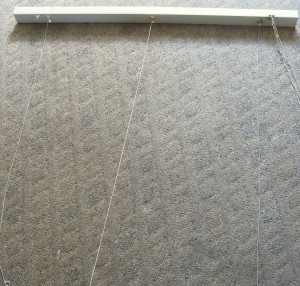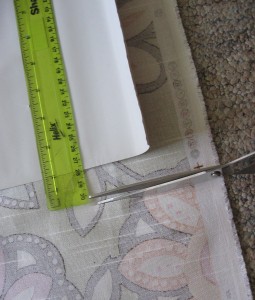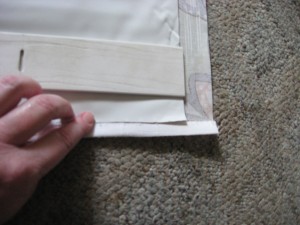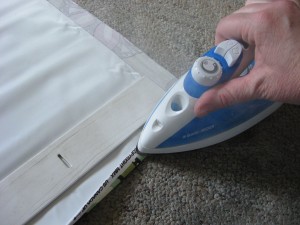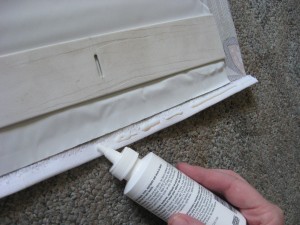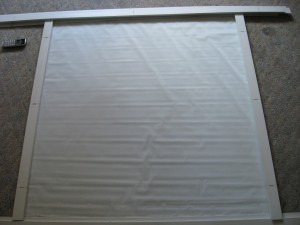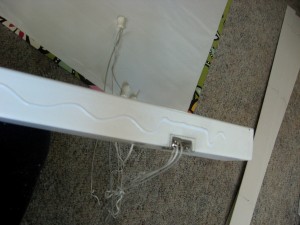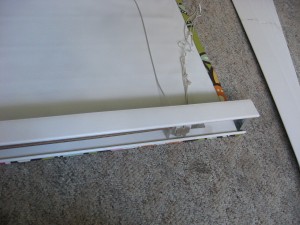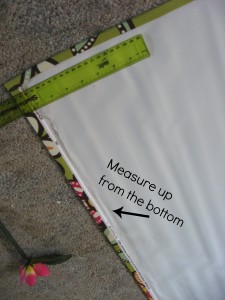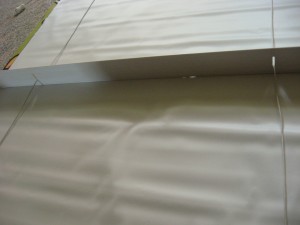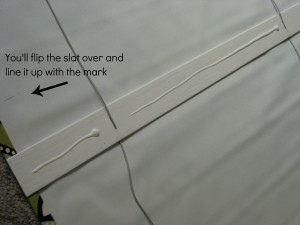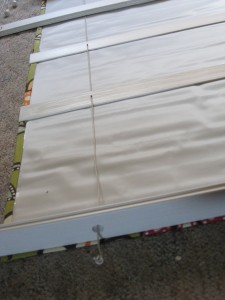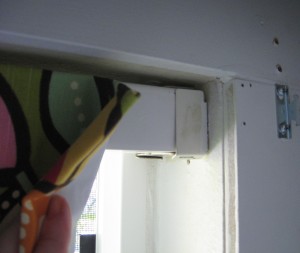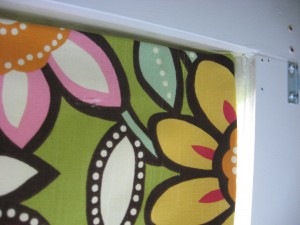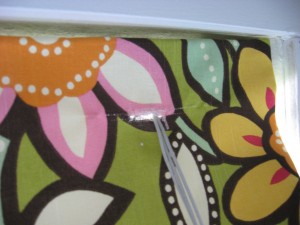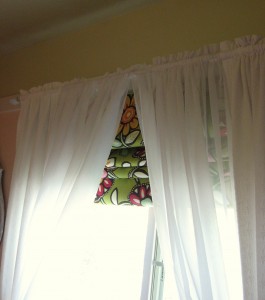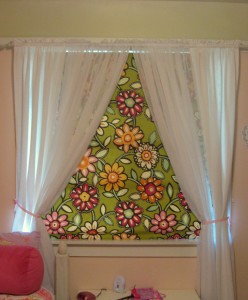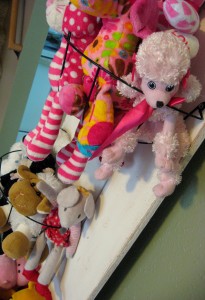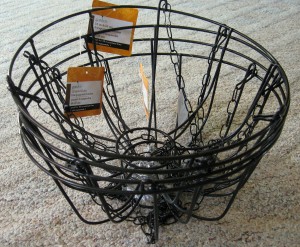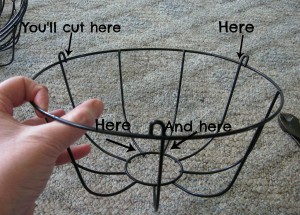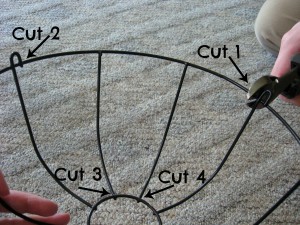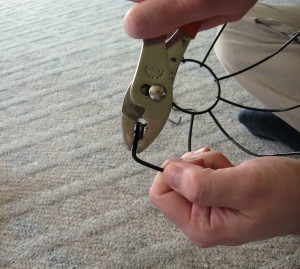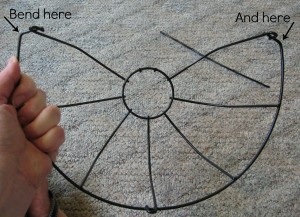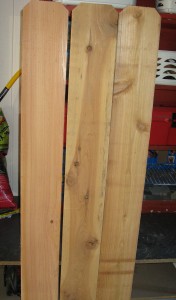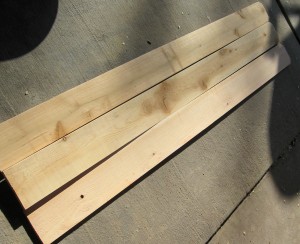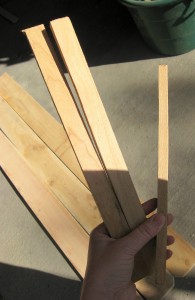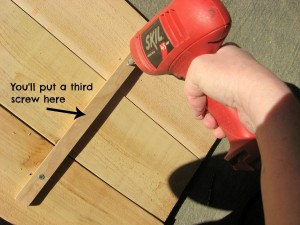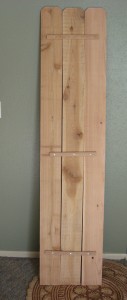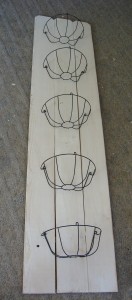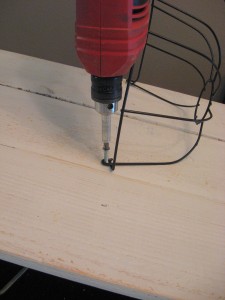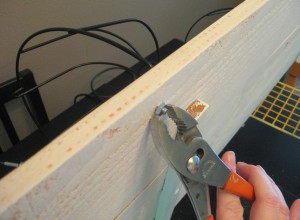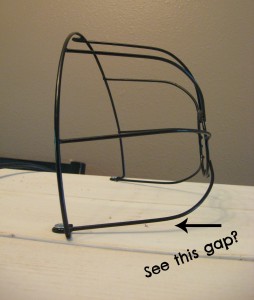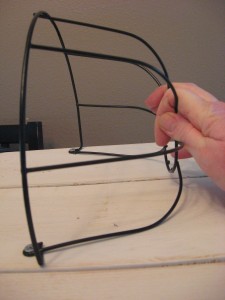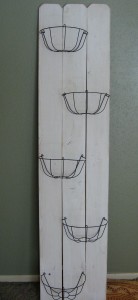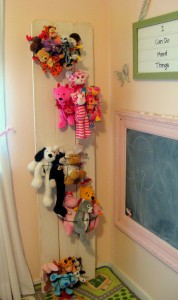Painting Laminate Furniture
If you google “How to paint laminate furniture” you will get dozens of different results. Being able to paint cheap laminate furniture and give it new life is the hallmark of the DIY blogger. I will admit that until recently I usually ignored these posts. I’ve been painting laminate furniture since before most of these bloggers were out of diapers – back in the day when everyone said it was impossible to do! I got great results – I have a cheap WalMart shelf in my kitchen that I first painted 19 years ago and it still looks great – but it was labor intensive with days of sanding, priming, painting and more sanding to get the desired results.
Well, I am glad that this old dog finally paid attention to some of those DIY bloggers and learned a new trick; I’m converted! I have always used Kilz brand primer, and I’m sure I still will, but what I have learned is that some primers are gripping primers and some are not. If you want to paint a surface that the paint won’t adhere to, you’ve got to give it something to stick to. Enter this wonder:
It grips to the surface to be painted with NO SANDING. I bought this straight off the shelf at Home Depot (have them shake it up for you while you’re there!). It is pretty pricey stuff, but it seems to go a long way. It comes in both white and grey; get white if your paint is light and use grey if it is dark.
I had an Ikea wardrobe that I have been wanting to paint forever, but I knew all that sanding was going to be a pain so I kept putting it off. I thought this was the perfect project to try out the Gripper on.
I forgot to take a picture of it before I took the doors off, but you get the idea…
Take the doors off, tape around the mirror and remove or tape all the hardware. I chose not to paint the inside, so I taped around there too. Give everything a good coat of the Gripper with a regular brush or roller.
You can see here that I wasn’t even too careful about getting the coat even. Here are my thoughts on this – I wanted this finished project to be something I could sand back into and expose some of the “wood” underneath. Usually when you try that on laminate furniture, the paint will just lift right off. I was curious how it would work here, so I only did one coat of Gripper. I have a dresser that I used it on that I wanted to be solid and smooth so I used 2 coats of Gripper and I was more careful to brush it on smoothly.
Let that dry according to the directions on the can, then cover with the paint of your choice. I didn’t get a picture of this step, but I used 2 coats of pale blue Satin interior house paint
Once that is dry, I went over the whole piece with a fine grit sandpaper on a small detail electric sander, roughing up the whole surface and concentrating (holding my breath!) in a few spots along the edges to wear the paint down to the wood. The paint came off very worn and natural-looking just as if it had been on raw wood! Wonderful!
Next I put on a wood stain. Just brush it all over with a paintbrush – working in small sections –
and then rub it back off with a rag. If you want it darker, then leave the stain on longer. If you want it lighter, continue to rub and buff it off with a rag until you get the desired results. Be sure to leave more stain in the crevices and cracks, where age build up would naturally occur.
Replace the doors and hardware – I got these cute little white ceramic knobs on a 50% off sale at Hobby Lobby for $2/knob. I saw the exact same knobs at Anthropologie for $7!
This has been sitting in the middle of our massive-messy remodel now for 3 weeks waiting patiently for us to finish the floor in it’s eventual home. It has been bumped, scraped, brushed up against and generally abused and it still looks great and COULD NOT have been easier to do.
Jenga Block Photo Keychain
I was helping someone move recently and we found a handful of homeless Jenga blocks in the bottom of a closet. I rescued them back out from the garbage; I knew I could find something fun to do with them! This project was basically free, as I had all of the supplies on hand already, but if you need to purchase anything, it shouldn’t be much at all.
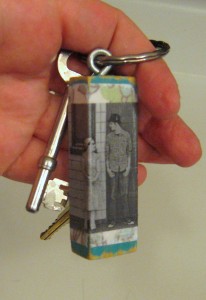
You’ll need a Jenga block or similar sized piece of wood, some scrapbook paper (paper will work better than cardstock), a little paint, a small eye screw, a drill and some Mod Podge.
You’ll also need a photo of your choice printed with a laser printer. If you print it on an inkjet printer, the Mod Podge will likely smear the ink in the photo, although if that is your only option, I have had luck with spraying the photo with a clear craft sealer and letting it dry well, then use the Mod Podge on top. Use the Jenga piece to decide about how big you want your photo to be and just print it on plain white paper.
*You only need one photo. I printed 2 in case I made a mistake!
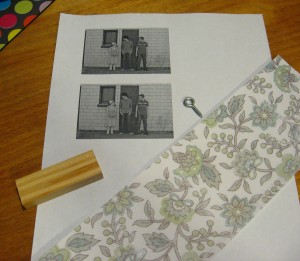
Draw an X on one end of the block and drill a small hole where the lines meet. This is where you will screw in the eye screw later.
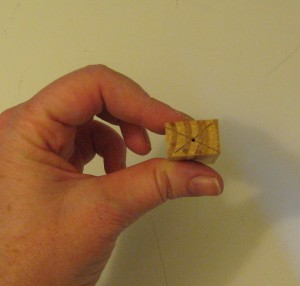
Now paint the ends of the block in the color of your choice. You only have to paint the ends because the middle will be covered with paper.
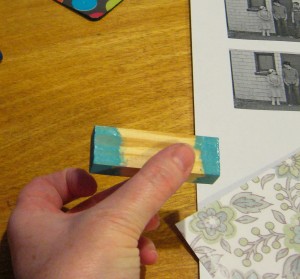
Once the paint is dry, it is time to Mod Podge on the scrapbook paper.
Cut a small piece of paper to the right height (just eyeball what looks good to you – it is up to you how much of the painted wood shows underneath!) and long enough to wrap around the block and just slightly overlap in the back.
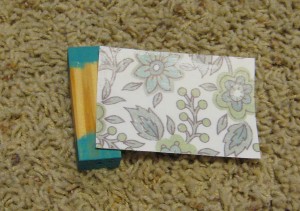
I found that it was easiest to Mod Podge the paper down one side at a time; it was pretty easy and gave me a nice crisp finish. Apply Mod Podge to one side of the block with a paintbrush and line the paper up so it is even with the edge of the block. Rub the paper with your fingers until it adheres and starts to dry, then move on to the next side, folding the paper tightly around the corners.
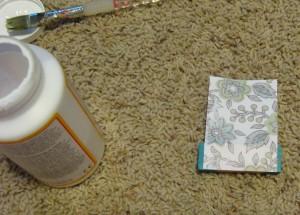
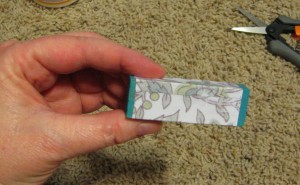
Once that’s dry, you can scuff up the paint and paper a little with some sandpaper if you like that look – or just leave it if you don’t! Now is a good time to put in the eye screw, as it gives you something to hold on to in the remaining steps.
Padded Messenger Bag Strap
My daughter prefers messenger bags to backpacks, but I find that if I leave them as they are, she comes home bright red and irritated where the strap has rubbed her neck. Luckily it couldn’t be easier to use a piece of scrap fabric to make an almost no-sew padded strap cover.
This year’s messenger bag does not have a detachable strap, so this tutorial will be for that. If your strap comes off, then it is even easier because you can sew the cover, then just slip it onto the strap.
First, cut off the padded part of the strap if it has one, and throw it away – so useless!
Decide how long you want the strap to be; mine is about 24 inches long because I like the way it looks, but you could do it shorter if you like. Then, figure out how wide to make it. Measure the width of the strap, double it and add 1 1/2 inches – my strap is 1 1/2 inches wide, so the width of my fabric will be 4 1/2 inches wide. Cut out your fabric into a rectangle in those measurements (so mine is 24″ X 4 1/2″).
Fold down each long side 1/2 inch and iron. Put a strip of Heat and Bond inside this fold and iron it down following the manufacture’s instructions.
Now cut a piece of padding almost as long as the strip of fabric, and the same width of the original strap (mine is about 21″ long by 1 1/2″ wide). Here, I used quilt batting, but in the past I have used fleece fabric and that works great too.
Fold the fabric in half and iron it flat.
Put a piece of Heat and Bond down the center of the padding, then open the fabric back up and line it up on top of the Heat and Bond like this:
and iron it down. Be careful not to iron it so much that it melts the batting; you just want it to keep the padding in place on the fabric while you finish the strap.
Now put the strap down on the padding, and put another piece of Heat and Bond along the outside fold.
Fold it over and iron it to seal the edge.
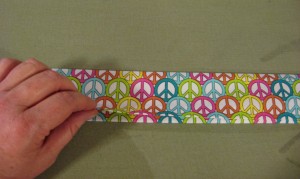
You could stop at this point, but I felt like it wasn’t holding together well enough to withstand the daily wear and tear, so I ran a straight stitch down that side to sew it closed (this is where it is a little difficult to keep everything straight with the bag attached. Just go slow and you can do it!)
Feels much better; and it’s cute, too!
Cabinet Door Projects
One of my favorite things to keep on hand for craft and home decor projects is cast off cabinet doors. They are so versatile! Here are four that are just waiting to be made over and I will show you 4 different projects with them over the coming weeks!
The black, white and light brown doors came from the “As Is” section at Ikea for $4 each. The smaller brown one came from my own kitchen when we took out some of our cabinets. You can often find cabinet doors at thrift stores, garage sales and remodeling neighbors. I’ve been known to find them lying on the side of the road and I always stop and pick them up!
Here’s a bonus project to pique your interest – a decorative tray. I don’t have a photo tutorial, but it is so fast and simple you won’t need it!
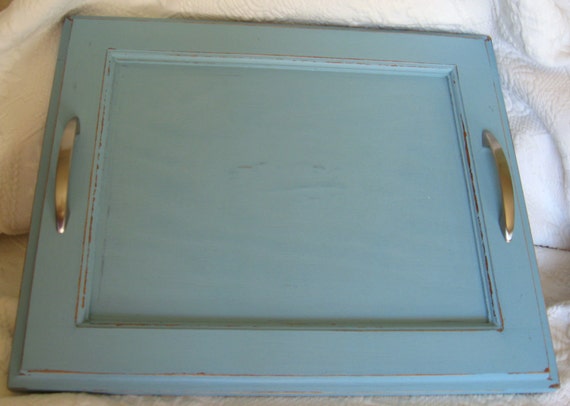
Start with a smaller cabinet door, remove any existing hardware and use wood filler to fill any holes left behind. Sand it lightly and clean off all the dust.
Now you can paint it. If the door is wood, you should be able to use any kind of paint you like – spray paint, craft paint, leftover house paint. Paint both sides, allowing it to dry well. Rough up the edges with sandpaper, then seal the paint if desired. I like using chalk paint and then sealing it with furniture wax, but you could use polyurethane, spray fixative, mod podge or depending on what you will use the finished tray for, you could just leave it as is.
Drill holes into the edges of the door and install the cabinet door handles (I bought these for about $3 at Walmart) and then put adhesive rubber feet on the bottom corners and you’re done!
Shabby Fireworks
I was reading someone’s blog today and she said that for her, the hardest thing about blogging was coming up with the first sentence of a post…I didn’t realize how much I agreed until she said it…
SO! Let’s make some fireworks!
I started with this piece of wood that I found in my garage. It is about 1 1/2 inches square,but you could use square, round, bigger, smaller…whatever strikes your fancy!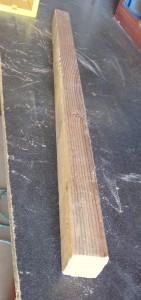
Cut into three pieces…I just eyeballed what I thought looked good – mine are about 10, 8 1/2 and 7 inches – and then give them a good sanding.
Drill a hole in the middle of the top of each stick – you will use this later for the “fuse”.
Now paint them and let them dry, then give the edges a light sanding to distress them a bit.
Next, cover each firework stick with scrapbook paper. Cut a strip that is long enough to go all the way around and overlap just a little on the back.
Wrap it around the stick, using the edges to crease the paper, then take the paper off and make the creases sharp.
Mod Podge the paper onto the sticks and let dry. Once it’s dry, take sandpaper to the edges and corners to rough up the paper a little and give it that shabby, worn look. Just be sure to use a light touch – the paper will tear easily.
When they look just the way you want them, seal them with a coat of Mod Podge on top of the paper.
Next we will make the “fuse”. I started with three wood stars that I bought at a craft store. trace them onto a piece of scrapbook paper – mine is a creamy white with old-fashioned script writing on it – and cut them out. Cut them a little bit on the big side rather than trying to line them up exactly…you will see why in the pictures below.
Paint the edges and the backs of the stars with a coordinating paint color – I used brown –
and once that is dry, Mod Podge the paper stars onto the unpainted side of the wood stars. Notice in the picture below how the paper is bigger than the wood?
Using an emery board (I buy packs of them at the dollar store just for crafting!) or a piece of sandpaper, sand the overlapping edges of the paper off by holding the emery board perpendicular to the star and sanding in downward strokes.
The paper will be cut off and you will end up with perfectly covered stars with perfectly crisp and even edges.
Seal the paper with Mod Podge and let them dry. Once they are dry, drill a hole through the middle of each star. BE CAREFUL! This wood will split easily, so go slow and don’t push too hard or you could break the whole star in half. Mine splintered off a little bit of wood on the back, so I just touched up the paint and it looks just fine.
Cut off a few inches of a heavy wire for each star. Using a pair of needle nose pliers, curl the end, then bend the curled part over about 90*
insert the other end through the hole in the star, position it how you want it, and – using the pliers – squeeze the wire together on either side of the star to hold it in place.
Cut the wire to the desired length, squirt a little glue into the hole you drilled in the stick and insert the finished fuse.
I stacked the three fireworks together and used a little dab of hot glue to hold them together so they wouldn’t shift around during this next step.
Wrap twine around them, leaving a tail, and using a dot of hot glue on the back to hold it in place.
Wrap the other end of the twine around the whole bundle until it looks good, then cut the twine and tie the two ends together like this:
The last sentence is just as hard as the first….ummmm….
TA DA! Finished fireworks!
Paper Stars
I’ll show you two different ways to fold a paper star. They are both fun projects to do with your kids and they make cute and easy 4th of July decor when you use red, white and blue paper.
Star #1
Start with any paper, and any size and shape of star. Trace the star shape onto the paper and cut it out.
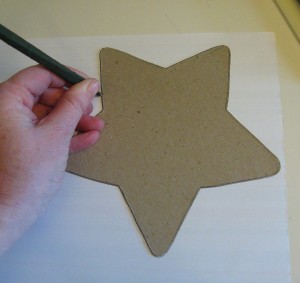
Using a ruler, connect each star point with the “valley” opposite it and fold.
I have drawn lines here to show you where you will fold – you don’t need to draw the lines (you should, though, probably be more careful to make sure all folds meet in the middle!)
Make a nice sharp crease by using a bone folder, or if you don’t have one, you can use a pen cap or another ruler.
Now flip the star over to the right side and make the folds go the way you want them to go – folds from the center to a point will point up and the folds from the center to a “valley” will point down – like this:
Once you’ve perfected it with paper, try it with metal! I cut apart some pop cans and folded them the same way.
You can put a string through one point and hang them from the ceiling, or string them together to make a garland. We opted to hot glue them to small dowels and display them in a vase.
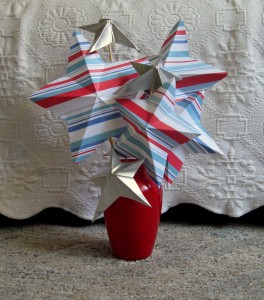
Star #2
You can use any size of paper for this star, but it needs to start out as a square and you will need two squares for each star. I used 12 X 12 scrapbook paper. I made my stars 2 different colors, but they look great all the same color too.
Start by folding the paper corner to corner on the diagonal; then open back up and fold on the other diagonal.
Now fold in half one way, then open back up and fold in half the other way.
Open the paper back up and cut along the folds that you just made – the horizontal/vertical ones, not the diagonal ones (see arrows in the picture below). Cut about 2 1/2 inches in on each fold.
Now fold each cut edge in to meet at the diagonal fold and form a sharp point at the end.
For each point, put glue (I used a glue stick) on one of the flaps:
then position the other flap on top of it and hold for a minute until it dries.
Once all 4 points are glued, it will look like this:
Now make a second one, exactly the same way, and attach them together back to back – double stick tape or sticky dots work great for this. Use a needle to thread a piece of string through for hanging.
We hung them from the light above our dining table; don’t judge them too harshly based on this bad picture quality – I either had to open the door to get natural light, which made them swing and spin from the wind, or try the pictures with the door closed and glaring overhead light! In person they are super cute!
Magnet Board
Have you seen these?
They look like an enormous cookie sheet, but they are drip pans to put under your car. They are big – about 2′ X 4′ – and you can get them at Walmart for about $11. I have had one in my craft area for awhile that I use as a magnet board. I needed one for my daughter’s room, and loved the size of these, but I knew the silver wouldn’t work in her pink room, so I pulled out my trusty Mod Podge and went for it!
You’ll need:
Drip Pan
Spray Paint
Fabric
Mod Podge
I started by cutting my fabric into a rectangle just a little bit larger than the dimensions of the drip pan – maybe an inch or so. The fabric will stretch a little as you Mod Podge it on, and you will cut off the extra when you’re finished, so you really only need to make sure that two adjacent sides are square and straight. If you have a rotary cutter and mat, you’ll want to use that. I don’t, so I used a carpenter’s square to mark it, then cut with scissors.
Put the fabric aside and paint the edges of the pan (you could save yourself this step by wrapping the fabric all the way around the edges to the back of the pan if you wanted to.)
You only need to do the edges, since the middle will be covered with fabric. I recommend using a high quality paint to lessen the chance of it scratching off of the metal. I like Krylon.
Once the paint is dry, find a big work space, make sure your kids are occupied and pop in a movie. Mod Podging fabric is a little trickier than paper and will take a little time and patience to get it all straight.
Start by lining up the two edges of your fabric that you cut straight with two adjacent sides of the pan. The corner will extend over; don’t worry about that yet.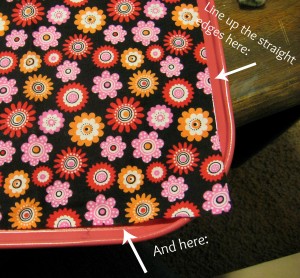
Once the fabric is all laid out and lined up with the edges, gently fold back the end and start applying the Mod Podge to the tray.
Start with the corner that you just lined up, then work your way across the short end of the tray until you get the fabric on that whole end adhered. Apply a few inches of the Mod Podge, then rub it down with your fingers until it is stuck.
Then gently fold back more fabric, apply more Mod Podge, rub and repeat. Make sure you are not leaving any spots under the fabric without Mod Podge. Once you get a strip across the whole short end adhered, leave it for 15 minutes to dry before you continue. If that first strip is lined up and attached well, the rest of it will be easier. Continue rubbing it with your hands (or a brayer) as it dries to make sure it dries flat and smooth.
Once that first strip is dry, you can work the rest of the way down the pan in strips. Fold the fabric back, apply enough Mod Podge to cover 4 or 5 inches. I just poured it on
and then spread it with a paint brush.
again, making sure not to miss any spots. Fold the fabric over the Mod Podge – carefully lining up the straight edge (remember the other edge will extend over at this point) and rub until it starts to dry.
Let that dry thoroughly, then you are ready to cut off the excess fabric. I used an exacto knife and a metal straight edge on the straight parts, but I just free handed it around the curved corners.
Once I pulled the excess fabric off, I discovered this:
Oops. Fabric pulled the spray paint off with it in some spots.
SO – learn from me when you make yours and either 1) Mod Podge the fabric on first, then tape it off well and spray paint second. or 2) Be very careful as you are brushing the Mod Podge on and don’t let it go up the sides of the pan.
But, in case you find yourself in a similar place and need to fix it, this is what I did. I sprayed some spray paint into the bottom of an empty butter tub- hold it close to the bottom and spray for a minute so that you get a really concentrated stream and end up with some liquid paint. Then I just used it like regular paint with a small paintbrush to paint over the mistakes.
Once that’s dry, give the entire pan a top coat of Mod Podge. Be sure you go up on the sides of the pan too to protect the paint from scratching off.
I spray painted the heads of the screws so they would match
then just screwed it into the wall (a drill bit in an electric drill will go right through the soft metal of the drip pan).
Done! I was worried that the layer of fabric would compromise how strong of a bond I would get with the magnets, but it didn’t; even the heavy birthday card from Grandma that plays that annoying charming and delightful song stayed put.
Patriotic Door Decor
When I bought the clothesline for this project, I also bought several packages of the red and blue because I thought it was so pretty. I found it in my craft drawer last week…red and blue? Of course; perfect for July!
I started with some oval plastic frames that I found at the local thrift store. They are all different, I just made sure they were similar in size.
Using hot glue, I wrapped the frames with the clothesline. I wrapped one frame in the blue and white, one in the red and white, and one in both. You can see that in the picture below; I just held both pieces of the clothesline side by side as I wrapped.
Once those were all finished, I measured to see what size star would fit best on them and drew a pattern. Because I have a scroll saw and a garage full of scrap wood, I cut out my own stars, but you can buy them ready to paint from a craft store.
I used three large stars and three small ones. I sanded them, painted them, then sanded the edges once the paint was dry.
Now I placed the large stars on the oval frames and arranged them so they were just how I wanted them. I carefully marked with a black Sharpie where each point of the star would touch the frame.
I put generous amounts of hot glue on those marks and adhered the star to the frame. Then, I hot glued the smaller stars on top of the larger stars and pressed it all together while it set.
I played with several different configurations to hang the frames, but finally decided that I liked them hanging vertically the best. Because I like to reuse things and craft with what I have on hand, I chose to use the top decorative board from some long-gone window blinds that I had lying around in my garage. You could easily just use a long, narrow board, or even a wide ribbon.
I drilled a hole in the top of the board for hanging,
then hot glued the frames in place.
Next project? Paint that front door!!
Father’s Day Treats
Do you have a Sonic in your town? Between their half price drinks in the afternoons and their half price shakes at night, the 10 blocks between my house and Sonic is well traveled every summer, which means I end up with a lot of these:
When I saw the empty cup holder sitting on my counter next to an empty canning jar, I realized it was the perfect combination to send some goodies to work with my husband.
I started by taping the box with clear packing tape to make it a little sturdier. Two layers around:
and then I taped across the entire bottom.
Now to make it pretty – uh embellished in an appropriately manly way.
I cut strips of paper to size for each side of the box, and three inches high.
I just used a glue stick to adhere the strips onto each side; since my next step is to wrap it with twine, I didn’t need to worry about using a stronger adhesive.
Next, I wrapped around the middle of the paper with twine, using a few dots of hot glue here and there to keep it in place.
I used a simple word document to print out labels for the jars, and a label for the box. The circles for the tops of the jars are 2 inches each. The bigger label is 2 1/2 inches.
Cut them out carefully, and Mod Podge the jar labels onto the jar lids by applying a thin layer of Mod Podge to the lid with a paint brush, and then rubbing the label with your fingers until it adheres and dries flat. After it dries a few minutes, put a thin layer of Mod Podge on top of the paper as well, to seal it and set aside to dry.
I made the sign for the front of the box by gluing the printed label onto layers of scrapbook paper with a glue stick:
Then glue onto the front of the box with a generous amount of hot glue. For a finishing touch, I hot glued twine around the handle as well.
Fill the bottles with your man’s favorite treats:
Add the labeled lids:
and deliver!
Chore Sticks
When my boys were small, one of my favorite end-of-the-school year projects was making a cute chore chart for the summer. Now that they are teenagers, they don’t really appreciate the cute anymore, and complained that they wanted a little less micro-managing! We tried a summer without any kind of chart at all, but it soon became clear that they weren’t ready for that either and we needed to find some middle ground.
Enter the chore stick.
We started by sitting down together and listing the tasks that I felt like they absolutely needed to do every day for me to be happy. They have other jobs and projects that they help with throughout the summer, but for our family, that list of daily responsibilities isn’t really too long – but they are things that can quickly slide if we let them. I found that just having a visual list didn’t have the same effect as when they actually have to physically handle something in order to “check off” their tasks, so I headed to the craft store and purchased a package of thick wooden craft sticks.
I painted the ends of the sticks – a different color for each child – and then used a Sharpie to write the tasks on the other end.
A quick printed label for the jars and that’s it. As they finish their tasks throughout the day, they move the stick from the “DO” jar to the “DONE” jar and I can tell with a quick glance if everyone is finished and who needs yelled at er, um… gently reminded.
DIY Roman Shade
Summer wreaks havoc on my daughter’s sleep schedule; it is light when I put her to bed and the light in the morning gets her up much earlier than I want to join her! I purchased a black out shade a few summers ago from Ikea for my own bedroom and it works great – totally where I recommend buying them if you don’t want to go the DIY route – but since our Ikea is quite a drive, I just bought a $20 shade from Kmart for my daughter’s room. And it broke in a week. She does have blinds, but they just don’t block out enough light. I decided to use the broken black out shade and some decorative fabric to make my own Roman Shade.
I used these blinds because that is what I had already, but you can follow these same instructions if you have the cheap mini-blinds. OR, if you are starting from scratch, mini blinds are super cheap at Walmart.
Take the blind, open them all the way and lay them out on the floor.
You will cut the thin strings that hold the slats in place – the ones that look like a ladder. DO NOT cut the heavier string that runs up through the holes in the slats – that’s the string that makes the shade go up and down.
Cut them all the way, top to bottom.
Now remove the little plastic plug at the bottom to reveal the knotty mess of strings there. Pull all the strings out – the knots in the thin strings that you just cut can just be cut away. Carefully untie the other string – the thicker one.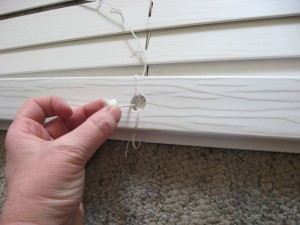
Now take that bottom board off and you will be left with the slats on the thicker string.
Remove all the slats and it will leave you with this:
Set this aside and prep the fabric.
I am using a piece of fabric and the plastic from the broken shade. You can buy black out fabric, or you can use just the decorative fabric if your shade is more decorative than for light control.
First, you will cut the black out fabric -if you’re using it- to size for your window. Then cut the decorative fabric to size plus one inch on all sides.
Fold the decorative fabric over 1/2 inch on all sides and iron.
Then fold over 1/2 inch again and iron.
BE CAREFUL if you are using plastic that you don’t melt it!
Now use fabric glue to glue this hem down on all four sides – gluing it to the black out fabric if you are using it.
Glue it down on all four sides and weight it down while it dries (I used the slats from the blinds).
Once that’s dry, you will glue the top of the blinds to the top of the fabric. Stop the glue a couple of inches from the ends so that you can hang it back in the brackets when you’re done.
Line it up carefully, weight it down and let it dry. Make sure you don’t get glue on any of the strings.
Once that’s dry, you will start to reassemble the shade. First, you need to decide how many folds you want in the shade when it opens. It’s totally up to you; I just measured the length of my shade and came up with a number that made sense to me; mine are about 9 inches apart.
Start at the bottom of the shade and measure up, making a mark on each side of the shade.
However many folds you want (however many marks you made) – that’s how many slats you will use. Slide them back onto the strings.
Put glue on the back of the slat – being careful to avoid the strings – and line it up with the marks you made.
Repeat for all of the marks, weight them down and let them dry.
Now restring the bottom board back on, glue it to the bottom of the shade, and weight it down while it dries.
When everything is dry, retie the strings at the bottom and replace the little plastic plugs.
Now rehang the blinds in the brackets. You can see here how I left the fabric loose at the ends, so that I could lock the blinds back in the bracket properly.
But it lies nice and flat:
At this point the strings are behind the blind. I’ve seen people deal with this a couple of ways; I’ve seen a few people glue the fabric to the BACK of the top bar on the blinds, but I don’t like the way that looks. Most people seem to leave it behind – you can open and close the shade, but I think it’s inconvenient, and since this is in my little girl’s room I needed her to be able to do it on her own.
I opted to cut a slit in the shade right where the pull strings come out of the top bar. I threaded the pull strings through the slit to the front of the shade. Put a little fabric glue on the fabric around the slit so that it doesn’t fray or tear.
Here they are open:
And closed:
Much better!
Stuffed Animal Storage
My daughter has an addiction – a stuffed animal addiction! Although I don’t mind enabling her, I don’t like how they end up piled in an ugly heap on the shelf, and I don’t like how she can never find the specific critter she’s looking for – especially the little ones. Here is how we solved the problem.
If you are DIY’ers with a well stocked garage you can do this project very inexpensively. Even if you have to buy everything, it should only cost about $15.
What you’ll need
- Wire hanging planter baskets. I used 5 and I got them at Dollar Tree.
- Board(s); as tall as you would like, and wide enough to accommodate the baskets; I used 3 6-ft. tall cedar fence boards. These are about $1.90 at Home Depot but they regularly go on sale this time of year for less than $1. (I use these for crafts all the time, so I buy a stack whenever they are on sale.)
- Thin boards to connect the fence boards together; I used scraps from my garage, but if you have to buy something, ask for lathing strips. You should be able to get one long board for about $1.
- Nuts and bolts a bit longer than the board is wide – look for these hanging in little bags in the same aisle as screws and nails. Should be less than $1 per bag and if you follow my design you will need 10.
- Screws
- Drill
- Saw
- Sander or Sandpaper
- Strong Wire cutters
- Paint
Let’s get started!
Start with the wire baskets; take off the hanging chain and either throw them out or save them for another project; you won’t be using them for this project.
Here is a close up of what my basket looks like. You will cut out a section of the basket so that it sits flat against the board. Make sure you keep the little loops that held the chain; that is where you will screw the basket into the board.
Use heavy duty wire cutters and cut as close to the intersections as you can, so you don’t leave a sharp end.
Now you’ll have a basket that has one whole “side” cut away. Next, with pliers, bend the little wire loops in at a 90* angle like this:
Bend the loops on each side, in towards each other.
Now it should look like this:
Cut and bend all of your baskets. Now take a minute to make sure you don’t have any sharp points, and if you find one, either cut it closer or file it down with a metal file.
Now we will put the boards together. A couple of notes about the boards that I used; I chose the dog eared cedar fence boards because that is what matches the style of my daughters room. You could easily change the style of this project by using one board that is wide enough for the baskets. You could even skip this part and attach the baskets straight to the wall. I considered attaching the baskets to the boards the other way. I decided that it fits better in her room vertically, but horizontally would be super cute too!
Here we go… cedar fence boards are notoriously warped and wonky. Again, for the style I was going for I didn’t mind if they didn’t fit together really tight, but if that matters to you make sure to take the time in the store to sort through the pile and find the straightest, flattest ones you can find.
The wood is very rough so start by giving them a quick sanding on all sides. Lay them out on the ground face down. Push them together and line up the bottoms so they are straight and perfectly lined up. See how mine are warped? That is fine; they’ll still go together. Just make sure the bottoms are even.
Now you will attach them together by screwing three strips of wood across them through the back. This is the wood I used – sorry for the shadows!
Hold the fence boards together tightly as you screw the cross boards in – use an extra set of hands, a large clamp or even some heavy cinder blocks on either side of the boards. Make sure you pre-drill all the holes so you don’t split the wood.
Here is what the back will look like when you’re all done:
Paint the boards in the color of your choice; I went with white and gave them a good sanding to distress them once it was dry.
Now we will attach the baskets to the boards. Lay the boards out on the floor and decide where you want the baskets. I worked on this for a long time, getting them perfectly lined up and spaced evenly.
Then my son came home and moved them so that they were offset. After I freaked out, I looked at them again and realized I liked it better this way. Just make sure that once you know for sure where you want them, use a pen to mark the placement of each basket through the wire loop before they get moved again 😉 This marks where you will drill.
You could just use a screw into the wood, but since the baskets will get a lot of action, I decided I wanted them to be really secure, so I used a nut and bolt. Drill a hole just big enough for the bolt to go through on each of your markings. Then, hold each basket in place and screw the bolt through the wire loop on the basket and through the board.
When all the baskets are screwed into place, flip the board onto its side and screw all the nuts into place using pliers or a…. ummm…. nut-tightening-tool (shoot!! What is that called?)
When you tighten all the nuts and bolts, it will make the baskets pop up away from the surface of the board.
I’m sure it isn’t a big enough gap for the critters to fall through, but I didn’t like the way it looked. I found that if I just pushed it down against the board,
the wires of the basket would bend enough that the basket would sit flat against the board again.
Here it is with all of the baskets attached:
**NOTE – Once this is full of critters, it is very front heavy. My intention is to hang this on the wall as part of my daughters room redo this summer. In the pictures here it is just leaned against the wall. My daughter is old enough that I feel safe leaving it this way until her room is finished, but if your kids are small and you think they might pull this over on themselves, PLEASE attach it to the wall before you fill it!
And here it is all filled with critters.

